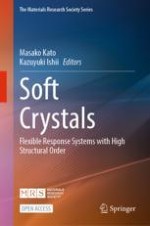Open Access 2023 | Open Access | Book

Soft Crystals
Flexible Response Systems with High Structural Order
Editors: Masako Kato, Kazuyuki Ishii
Publisher: Springer Nature Singapore
Book Series : The Materials Research Society Series
Open Access 2023 | Open Access | Book

Editors: Masako Kato, Kazuyuki Ishii
Publisher: Springer Nature Singapore
Book Series : The Materials Research Society Series
This open access book introduces the science of the new materials, soft crystals, by showing various interesting examples. Different from conventional hard and stable crystals, the soft crystals respond to gentle stimuli such as vapor exposure and rubbing but maintain their structural order. In this book, their exhibition of remarkable visual changes in their shape, color, and luminescence is described. Through the chapters, historical background, recent remarkable developments, and future prospects are described concisely. This book helps readers to understand a new concept of materials that have the characteristics of stimulus-sensitive soft matter and finely controlled crystals and to design novel materials with the characteristics.
The English translation of this book from its Japanese language original manuscript was done with the help of artificial intelligence (machine translation by the service DeepL.com). The text has subsequently been revised further by a professional copy editor in order to refine the work stylistically.